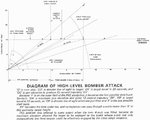parsifal
Colonel
Edison was firing at surface targets, just as Kimberly was. Again there are no additional difficulties in loading either the 5in/38 or the 4.7in twin at higher angles. Condition at Casablanca were quite calm.
Sorry, but a total distortion of facts. I will not comment directly on the Kimberley action until the full details come to light. However for the edison, the preconditions you describe were simply not there. Firstly, the actions in Narvik were all undertaken withiin sheltered waters, whereas for the Edison, the conditions were sea state 3 and rising. not much to worry about, but thye are not the same.
For the Kimberley, I do not know which days action you are referring to (I will tonite though). The Edison however was attempting to deal with multiple threats, some airborne, some under the ocean, some stationary and some underway. The crew, to say the least would have been extremely busy as they chased the French Commandant Delage and La Gracieuse back into the harbour. then they were confronted with fire from the Jean Bart and the shore batteries....and attempts by the submarines Tonnant, Meduse and Antiope, against the capital ships Edison was escorting. These submarines were vigorously counterattacked by USN forces, including Edison, which again would affect her gunfire....you cannot maintain a good rof whilst manouvering to sink a sub....(which was achieved incidentally).
But then why am i bothering. if information doesnt suit your purposes you will simply reject it. And it doesnt matter who, I still cannot get over your rejection of the official reports to the Admiralty given by the men on the spot, who just happen to be the best and most competent carrier commanders from the RN at that time, and your stated preference to book learnt theory over any operational or practical experience. I think I can say on behalf of those of us that do have operational experience, including some expereince on some of the equipment you are quoting academically from, its a little unbelievable your dismissal of these mens expertise.
As to your claim about the 4.7 having no problems at higher elevations...well if true (which it isnt) that means that it was better than the 4.5 (which replaced it, because it was a true DP weapon) , which Ive seen and used. The 4.5 did have some difficulties when firing at higher altitudes. If the RN had no difficulties at higher altitudes with the 4.7, and the 4.7 could fire at 16-20 rpm at those altitudes as you claim why on earth did they bother changing to the 4.5, which from my expereience had a max rof at elevation of just under 20 rpm, with VT fusing . . Never saw the 5/38, but did see the auto loaded version of it....had no problems at those altitudes at a high rof (about 60 rpm in the automated version) .
This is really getting ridiculous. You are not really debating, or discussing. you are lecturing, as am i now. We really should change the subject and move on


